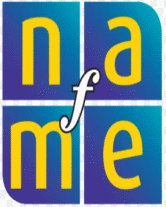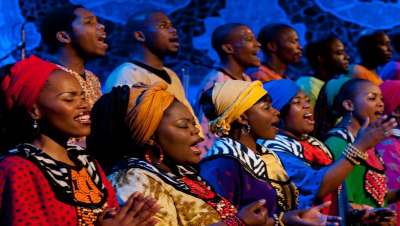Work with students to perform a Native American song and dance, "Owl Dance." Allow them to describe and analyze the drum patterns and changing styles of the music and dance.
Objectives
- Students will listen to a recording of the Owl Dance, and then identify and describe changes in the sound and style of the drum beats that accompany the singing.
- Students will perform the Owl Dance and respond to changes in the sound and style of the drum beats that accompany the singing with specified changes in dance movement and style.
Materials
- Owl Dance from the recording and booklet Wapato Indian Club: Traditional Dances and Stones of the Yaldma Indian Nation, by Lisa A. Parker
- Map of the United States with the location of the Yakima reservation clearly marked
Procedures
- Locate the reservation on a map of the United States and give the students a brief historical background and cultural context for the Yakima tribe.
A brief history of the Yakima peoples is as follows: In 1805, Lewis and Clark identified the present-day Yakima under the name Cutsahnim after encountering these people on the lower course of the Yakima River in the Great Basin and Plateau regions. The Yakima called themselves Waptailmin people of the narrow river referring to the narrows of the Yakima River where their principal village was located. The Confederated Tribes and Bands of the Yakima Indian Nation reside on the eastern slopes of the Cascade Range in the Yakima Reservation, with tribal headquarters located in Toppenish, Washington.
The cultural context is as follows: The Owl Dance is a social dance performed at dance ceremonies to encourage social interaction between the tribe's young men and women. It is a "ladies' choice" couples dance. The name comes from the timing of the owl dance in the dance sequence late at night. The following quote can be found in the booklet: It was said by one of our elders, Well, I guess it's time for the Owl Dance the owls should be out by now. - Introduce the Owl Dance through a discussion of the cultural context of the dance and a description of the music to be heard during the lesson.
- Play a recording of the Owl Dance, instructing students to listen for and be ready to identify and describe any changes in the drum beats that accompany the singing.
- Lead the class in a discussion of the Owl Dance, asking student volunteers to identify and describe the changes they hear in the drum accompaniment. (The drum begins with the drummer striking the drum head. For certain sections of the song, he also strikes the drum's rim. This change of styles alternates throughout the song and is an aural cue for changes in dance movement.)
Optional: Have a student volunteer demonstrate differences in sound by playing on a classroom drum. - Teach the Owl Dance as follows:
- Couples form a large circle. Partners face each other, with boys on the outside of the dance circle. Dancers will be in ballroom dance formation.
- As the drum begins, step forward, with the leading leg moving in a counterclockwise circle; left/right knee (male/female) moves up, and then the other foot slides forward as the knee comes down. Extended hands pump in and out to the drum beat, with the hands in when the knees are up.
- When the drummer begins playing on the rim, the couples travel around in their own small circles for eight beats. They resume the larger formation movement when the drummer returns to playing on the drum head.
Optional: Assign several students as drummers to reinforce changes in drum sound.
After the class has performed the Owl Dance, review the cultural context of the dance, the changes in the drumming, and how this serves as an aural cue for changes in dance movement.
Standards Correlations
Standard 2
:Performing on instruments, alone and with others, a varied repertoire of musicStandard 6
:Listening to, analyzing, and describing musicStandard 9
: Understanding music in relation to history and culture
Excerpted fromMulticultural Perspectives in Music Education.

| Provided in partnership with NAfME |
Work with students to perform a Native American song and dance, Owl Dance. Allow them to describe and analyze the drum patterns and changing styles of the music and dance.
Holidays
TYPE:





